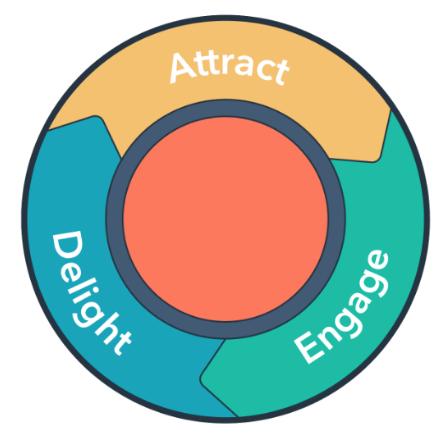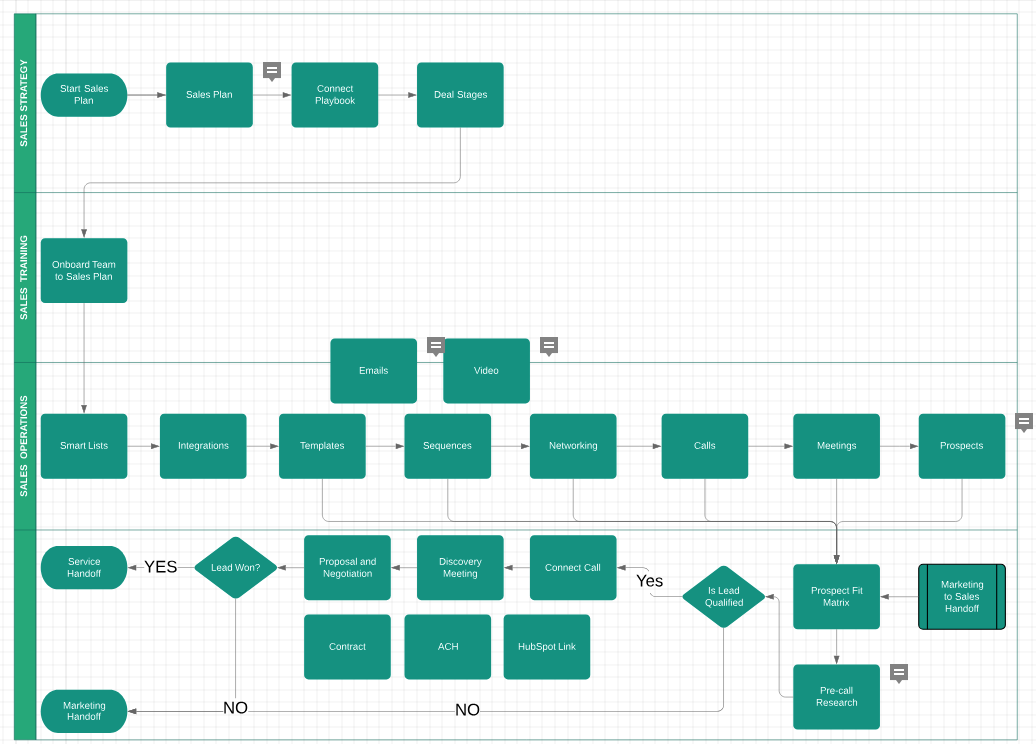We’ll assume you’re looking to grease the wheels of your business. Whether your marketing just isn’t working or your sales are stuck...by identifying and removing the friction from your current business processes, you’ll grow through optimization and automation.
At Media Garcia, we have decades of corporate retail experience and have worked hard to scale what we know about optimizing processes for small businesses. As a small business leader, we understand that your bottom-line is priority and the marketplace has a premium on strategic services.
We’re excited to offer you a step-by-step roadmap to identifying friction within your business processes to save you time and money. With our roadmap, you’ll work on your business so you can begin working for your business.
Inbound marketing is just one part of a larger movement in the business world. That movement is inbound.
Inbound is a method of attracting, engaging, and delighting people to grow a business that provides value and builds trust. As technology shifts, inbound guides an approach to doing business in a human and helpful way. Inbound is a better way to market, a better way to sell, and a better way to serve your customers. Because when good-for-the-customer means good-for-the-business, your company can grow better over the long term.
The inbound methodology is composed of three stages: attract, engage, and delight. Inbound businesses use the methodology to build trust, credibility, and momentum. It’s about adding value at every stage in your customer's journey with you.
From a business perspective, the methodology represents the growth of your business, and happy customers provide the energy that fuels that growth, either because they buy from you again or because they bring new customers to you by promoting your product to other people in their network. But if you produce unhappy customers, either by selling to people who are bad fits for your offering or by overpromising and under-delivering, they’ll slow your company’s growth.
When all of your teams are aligned around an inbound approach, you can provide a holistic experience for anyone who interacts with your business, no matter where they are in their buying journey. Attracting isn’t just the role of marketers. Engaging isn’t just the role of sales. Delight isn’t just the role of services. To create relationships that last and customers that stay, every customer-facing team needs to focus on how they can contextually attract, engage, and delight your prospects and customers and continue to build trust in your brand.
How do you begin to move inbound? Begin by building your flywheel.


As seen above, your prospects and customers’ experience with your business are all intertwined. We use the model of the Flywheel to illustrate how removing friction from each part of the customer experience will spin it faster.
You’ll first want to begin by identifying the core activities you are doing to attract, engage and delight prospects and customers within your marketing, sales and service aspects of your business.
I provide value to prospects by….
I make it easy for prospects to buy by…
I make my customers successful by…
Here’s an example of Media Garcia’s Flywheel
At Media Garcia, we provide value to prospects by providing them access to training, stories, tools, and connections.
We make it easy for prospects to buy by empowering them to design their own future possibility and self serve
We make our customers successful by Optimizing their marketing, sales, service, and retail processes
Once you have identify your core activities...look at all the actions within the core activities to deliver on them. What are the forces in your core activities moving the flywheel. How are you delivering on your core activities within your marketing? Sales? Service?
What Are Process Maps & Why Use them?
Process mapping is used to visually demonstrate all the steps and decisions in a particular process. A process map or flowchart describes the flow of materials and information, displays the tasks associated with a process, shows the decisions that need to be made along the chain and shows the essential relationships between the process steps.
Creating a process map helps organize processes and makes information visible to everyone. By creating a process map or flowchart, you are producing a visual example of the process to better understand it and see areas for improvement.
How do you get started with process maps?
First let’s go by process area starting with marketing, then sales, then service. Make sure that we are including the marketing, sales, and service forces that we’ve identified in the flywheel.


Here’s an example of a simple process map. Begin by first identifying the beginning and end activities. Using the forces you identified for each of you
Document How long does it take to do each step
Consider and share what technologies do you use throughout the process?
Consider and identify separately or in a different color What frustrates you or your customers? (friction)
“Tell me about your best customer” - where did you find them and how was their step by step experience
“Tell me about times you lost prospects” - where was there friction in the process
Consider what do you want to happen if anything were possible, don’t limit your imagination by things like ‘we’ve always done it this way’, is there a chance to do something radically different?
Consider what steps are missing and add them as another color that they are missing
Consider if you are changing anything about the process and want to highlight it
Branch off where there are different routes in processes and cover all routes.
Receive regular growth tips by becoming a Growth Subscriber. Enter your email below to join.
Media Garcia is a growth agency that provides competitive advantage to small retail businesses who desire growth by optimizing their processes because their time-strapped leaders deserve freedom.
Saint Paul, Minnesota
hola@mediagarcia.com